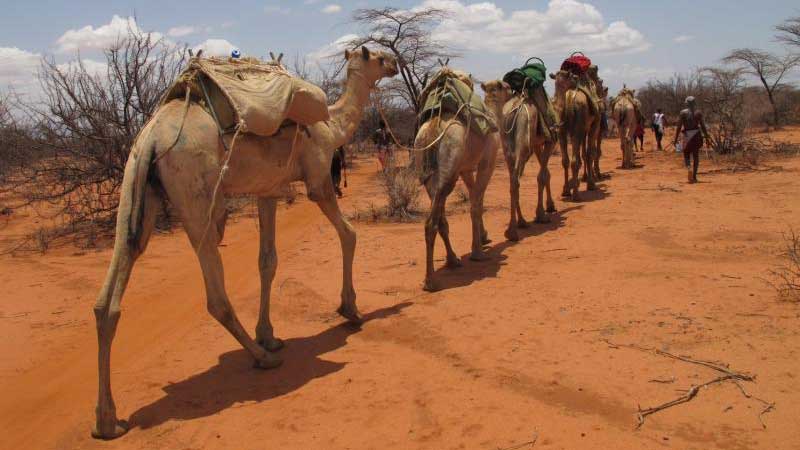
An outbreak of Rift Valley Fever (RVF) in North Eastern counties has left at least 13 people dead.
Hundreds have survived the haemorrhagic disease that leaves victims bleeding from most parts of their bodies including the eyes, ears, nose and mouth. Blood is also passed through patients' faeces and urine.
A week ago, Marsabit County residents were cautioned after the disease broke out in neighbouring Wajir.
Those who died are said to have consumed infected meat. Samples of the meat were tested by veterinary officers and found to contain the RVF virus.
According to County Director of Public Health Adano Kochi, RVF broke out in Marsabit in 2006. Other outbreaks were reported in 2016 and 2018.
A total of 234 suspected cases have been discovered since the first outbreak, with about 13 deaths reported so far.
The outbreak has been blamed on prolonged rains leading to heavy flooding and stagnant waters, which create a conducive breeding environment for the Aedes and Culex mosquitoes, the main vectors for transmission of the disease.
Human beings are infected through livestock when one comes in contact with body fluids or eats animal products like meat, milk and blood from sick animals.
Abortion, mostly among sheep and camels, haemorrhage and fever are among the signs of Rift Valley Fever in animals.
For the past three weeks, the county has experienced increased cases of abortion in camels, goats and sheep.
A total of 14 camels died in Funanyatta and Bori in Moyale, while 12 camels aborted.
There are reports of more cases in Badanrero, Amballo, Ittir, Kargi, Olturot, Loglogo, Korr and Laisamis.
Residents in affected areas have been advised to feed only on inspected livestock products including meat, milk and blood.
According to the county government, Moyale is hardest hit by the outbreak.
In North Horr sub-county, North Horr, Balesa, Demo, Shuur and Maikona are the most affected.
The veterinary department this week rolled out plans to enhance surveillance, institute ring vaccination, increase public awareness, quarantine livestock, restrict home slaughter and close livestock markets to control the spread of RVF.
The department said prolonged heavy rainfall and increased vegetation had led to increased vector breeding, and urged residents to sleep under treated mosquito nets to avoid infections from the deadly mosquitoes.
Marsabit County Director for Veterinary Services Boku Bodha said residents were at a higher risk than Mandera and Wajir locals because animals in small stocks were being ferried using all means of transport from Wajir and Mandera to the Moyale markets.
“Our main challenge now is to handle and control movement of livestock from the affected areas as already thousands are currently being transported from areas bordering Badanrero, Bute, Buna, Basir, Lakole, Rahmu, Daandu, Qofole and the wider Wajir and Mandera counties," he said.
"Slaughtering of livestock en masse during the Idd celebrations likely posed a greater risk for residents."
Mr Bodha added that the only animals not affected by RVF were poultry and donkeys.
Speaking to The Standard in Marsabit town after dispatching surveillance teams to the border sub-counties of North Horr, Laisamis and Moyale, County Chief Officer for Health Jaldesa Dima urged residents to be vigilant to help prevent the disease from spreading.
He told pastoralists in Marsabit not to take their animals along the borders to minimise chances of their livestock being infected.
In the last two weeks, 1,800 head of cattle have been tested for the disease in the three border towns.
On Thursday, the county government resorted to provisional quarantine and ring vaccination of livestock to curb any spread of RVF.
This came a day after a resident tested positive for the disease after an analysis by the Kenya Medical Research Institute in Nairobi.
The patient was one of two who were admitted to Marsabit County Referral Hospital a week ago.
The county government admitted it had challenges handling the disease due to lack of sufficient field and laboratory equipment, and trained medical and public health practitioners.
The last major RVF outbreak was reported in 2006-2007, at the end of a prolonged rainy season. About 160 people died while the livestock sector lost about Sh4 billion.
According to Wajir County Veterinary Director George Kiprono, RVF was first identified in 1931 during an epidemic among sheep on a farm in the Rift Valley in Kenya.

